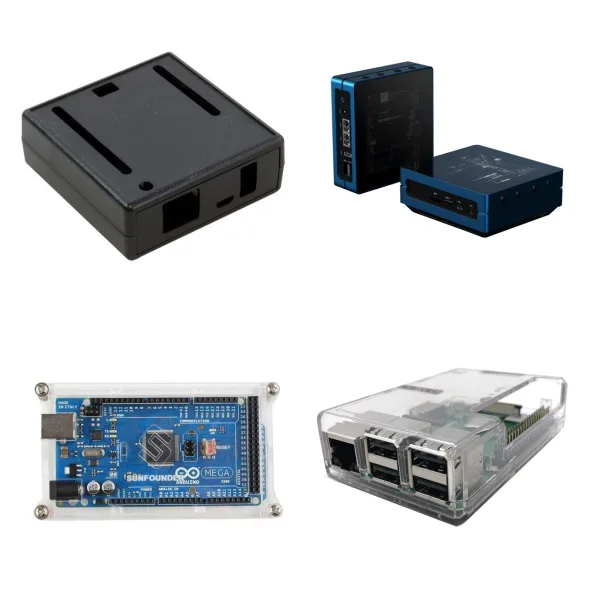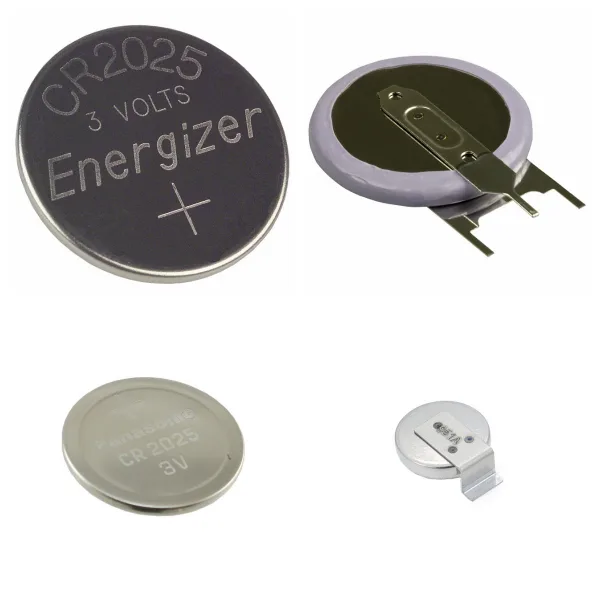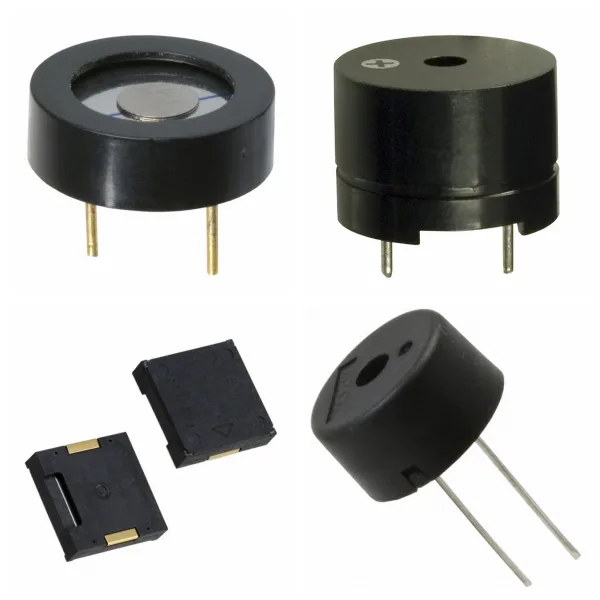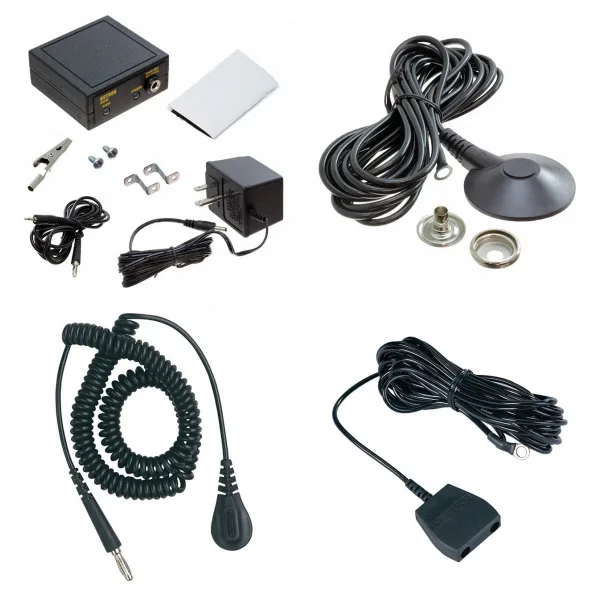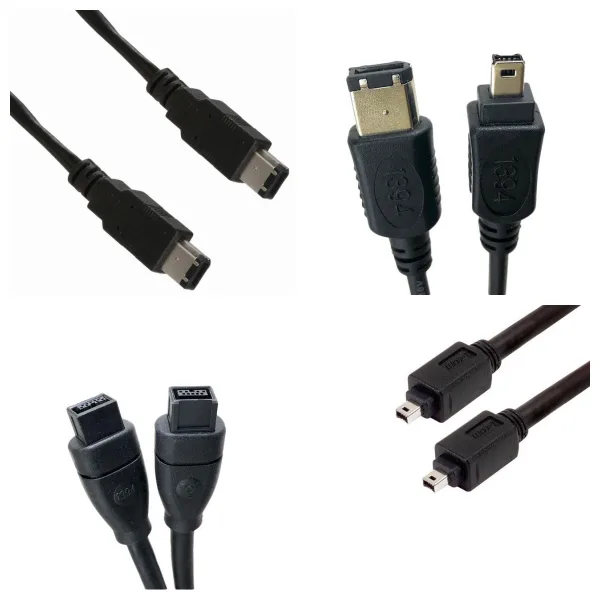<h1> Boxes, Enclosures, Racks </h1> <p> "Boxes, Enclosures, Racks" are key components used for physical protection, electromagnetic compatibility management and system integration in the field of electronic equipment. </p> <h2> 1. What are the Core Functions of Boxes, Enclosures and Racks? </h2> <p> Physical Protection: Electronic devices should have shell protection to guard against environmental interference from dust, moisture, vibration, and other sources. </p> <p> Electromagnetic Compatibility (EMC): Utilize high attenuation materials and shielding structure design to minimize electromagnetic interference (EMI) produced by internal high-speed electronic equipment and guarantee device compatibility. </p> <p> Modular Integration: Support standardized installation and expansion of multi-level equipment (such as power supply, control module, etc.) to improve system maintenance efficiency </p> <h2> 2. What are the Design Points of Boxes, Enclosures and Racks? </h2> <p> Material Selection: Use metal or conductive composite materials to enhance electromagnetic shielding effectiveness, and optimize equipment temperature control through heat dissipation design </p> <p> Structural Optimization: Including sealed interfaces, grounding design, etc., to balance protection level and equipment maintainability </p> <p> Compatibility Adaptation: The layout needs to be adjusted according to the type of internal components (such as active/passive components) to avoid signal interference </p> <h2> 3. What are Boxes, Enclosures and Racks Used for? </h2> <p> Industrial Equipment: used for protection in complex environments such as automation control systems and power electronic devices. </p> <p> Communication Base Stations: When integrating high-frequency signal processing modules, shielded cabinets are required to reduce radio frequency interference. </p> <p> Laboratory Testing: Provide a stable electromagnetic environment for precision instruments to ensure measurement accuracy. </p> <h2> 4.What are the Core Components of Boxes, Enclosures and Racks? </h2> <p> Electronic components in the chassis/rack usually include: </p> <p> Active components: such as integrated circuits and transistors, are used for signal amplification or control. </p> <p> Passive components: such as resistors and capacitors, undertake energy regulation or filtering functions. </p> <p> Composite components: Class C devices such as sensors and relays, which realize modular integration of specific functions. </p> <p> Through the above design, the products in this column meet the needs of modern electronic systems for compactness, high efficiency and environmental adaptability while ensuring equipment reliability. </p>
<h1> Battery Products </h1> <h2> 1.What are the Core Components of Battery Products? </h2> <p> <strong>Cell</strong>: As the basic unit of the battery, it is composed of a positive electrode, a negative electrode, a separator and an electrolyte, providing a voltage output of 3V-4V. The materials include lithium-ion, nickel metal hydride or lead acid, etc. </p> <p> <strong>Batteries</strong>: It is composed of multiple cells connected in series/parallel to increase voltage or capacity, such as 12V modules or high-capacity combinations. </p> <p> <strong>Battery Pack</strong>: It is integrated by a battery pack and equipped with a battery management system (BMS) to form a product that can be directly applied, such as an electric vehicle lithium battery pack. </p> <h2> 2. What are the Packaging Types of Battery Products? </h2> <p> <strong>Hardshell packaging</strong>: It uses steel/aluminum materials and is divided into cylindrical (high production efficiency) and square (compact structure). </p> <p> <strong>Soft package packaging</strong>: It uses aluminum-plastic film, which has the advantages of lightweight and high energy density, but the degree of automation is low. </p> <p> <strong>Supercapacitor</strong>: It is between batteries and traditional capacitors, supports fast charging and discharging, and has a long cycle life, and is suitable for high-power scenarios. </p> <h2> 3. What are the Technical Features of Battery Products? </h2> <p> <strong>Patented technology</strong>: such as heating connector design, optimizing thermal management of battery box and external environment. </p> <p> <strong>Material innovatio</strong><strong>n</strong>: Graphene electrodes improve conductivity, and ionic liquid electrolytes enhance stability. </p> <p> <strong>Process differences</strong>: The cylindrical winding process is highly efficient, and the square stacking process is suitable for soft-pack batteries. </p> <h2> 4. What are Battery Products Used for? </h2> <p> <strong>Consumer electronics</strong>: mobile power supplies, smart devices, etc.. </p> <p> <strong>Industry and transportation</strong>: electric vehicle power batteries, energy storage systems and outdoor equipment (such as garden tools). </p> <p> <strong>Emerging fields</strong>: high-power demand scenarios such as grid regulation and robots. </p> <h2> 5. The Industry standards and compliance requirements of Battery Products </h2> <p> <strong>Safety certification</strong>: Cross-border e-commerce needs to provide IEC/EN62133 or UL2054/UL1642 certification and temperature test reports. </p> <p> <strong>MSDS file</strong>: Lithium batteries must include component data, hazardous materials classification and emergency disposal plans to ensure safe transportation and use. </p> <p> International Standards: Following the GHS standards, each country should issue SDS documents (such as EU REACH, China GB/T 16483). </p> <h2> 6.The Challenges and Development Directions of Battery Products </h2> <p> <strong>Energy density improvement</strong>: Supercapacitors need to break through the bottleneck of low energy density. </p> <p> <strong>Cost and consistency</strong>: Soft-pack batteries rely on imported aluminum-plastic films, and production consistency needs to be improved. </p> <p> <strong>Environmental protection needs</strong>: Promote the research and development of green technologies such as cobalt-free batteries and solid electrolytes. </p> <h2> 7. Battery Products FAQs </h2> <h3> 1) Whether the Temperature Affects the Life of the Battery Products? </h3> <p> Yes. High or low-temperature environments may affect battery performance. It is recommended to avoid charging or discharging at extreme temperatures. </p> <p> Some batteries have low/high-temperature protection functions: </p> <p> <strong>When charging</strong>: Charging stops automatically when the temperature is below 0°C or above 55°C. </p> <p> <strong>When discharging</strong>: Discharging stops when the temperature is below –10°C or above 55°C. </p> <h3> 2) What are the Precautions When Charging with Battery Products? </h3> <p> Using the original charger can optimize charging efficiency and extend battery life. </p> <p> When using a new battery for the first time, it is recommended to fully charge and discharge to activate battery performance (applicable to some models). </p> <h3> 3) How to Maintain the Battery Products? </h3> <p> Regularly cleaning the internal blockages of the device (such as vacuum cleaner filters) can improve battery efficiency. </p> <p> When storing the battery for a long time, keep the power at 30%-50% to slow down aging. </p> <h3> 4) How to Troubleshoot Battery Products? </h3> <p> If the battery is abnormally hot or cannot be charged, it is recommended to contact the official after-sales service for inspection. </p> <p> Some batteries support remote positioning function (such as mobile phone batteries), which is convenient for tracking when the device is lost. </p>
<h1> Audio Products </h1> <h2> 1. What are the Main Types of Audio Products? </h2> <h3> 1) Speaker </h3> <p> <strong>Function</strong>: Converts audio electrical signals into sound energy output, and is the core component of the audio system. </p> <p> <strong>Technical features</strong>: </p> <p> Uses a pure piston drive design, combined with aluminum and damping materials to reduce distortion. </p> <p> Sensitivity, frequency response, and directional characteristics directly affect the sound quality. </p> <h3> 2)Microphone </h3> <p> <strong>Types</strong>: Including capacitive (ECM, MEMS), dynamic, piezoelectric, etc. </p> <p> <strong>Application</strong>: Voice interaction, active noise reduction and recording scenarios, MEMS microphones have become the first choice for consumer devices due to their high consistency. </p> <p> <strong>Audio connector</strong> </p> <p> <strong>Structure</strong>: Divided into balanced, separate, and non-separate circuit designs, affecting anti-interference ability and signal transmission quality. </p> <p> <strong>Process requirements</strong>: The appearance must be free of burrs and leaks to ensure stability and durability. </p> <h3> 3)Dynamic Unit </h3> <p> <strong>Innovative technology</strong>: For example, the runway-type dynamic unit improves acoustic performance by optimizing the diaphragm material, which is suitable for professional microphones and micro speakers. </p> <h2> 2. What are the Key Performance Parameters of Audio Products? </h2> <p> <strong>Nominal power and impedance</strong>: The speaker needs to match the rated power (such as 0.1W~200W) and impedance (4Ω~32Ω) to ensure compatibility. </p> <p> <strong>Frequency response</strong>: Determines the audio coverage range, and high-end speakers can reach 23Hz~52kHz. </p> <p> <strong>Distortion</strong>: Including harmonic distortion and intermodulation distortion, which directly affects the sound quality restoration. </p> <h2> 3. What are Audio Products Used for? </h2> <p> <strong>Consumer electronics</strong>: Smart speakers, headphones, etc. rely on micro speakers and MEMS microphones to achieve high-fidelity interaction. </p> <p> <strong>Professional audio</strong>: Floor-standing speaker systems with multi-frequency design meet the high dynamic requirements of theaters and recording studios. </p> <p> <strong>Industrial equipment</strong>: Durable piezoelectric ceramics and buzzers are used in scenarios such as alarms and status prompts. </p> <h2> 4. What are the Technology Development Trends of Audio Products? </h2> <p> <strong>Material innovation</strong>: Such as the application of laminated diaphragms and aerospace-grade aluminum materials to improve driver efficiency and durability. </p> <p> <strong>Integrated design</strong>: The acoustic module integrates the microphone, speaker, and processing circuit to simplify the internal structure of the device. </p> <h2> 5. Best brands for Audio Products </h2> <p> Bose </p> <p> Sony </p> <p> JBL </p> <p> Yamaha </p> <p> Pioneer </p>
<h1> Anti-Static, ESD, Clean Room Products </h1> <h2> 1. Protective clothing and personal protective equipment </h2> <p> Antistatic work clothes: Made of washable polyester mesh material, with various colors (such as white, blue, pink, etc.), suitable for clean room environments such as microelectronics and optoelectronics, and ESD certified to ensure electrostatic protection performance. </p> <p> Antistatic shawl cap: Reduce the impact of static electricity generated by human activities on sensitive components, need to be cleaned 1-2 times a week, and regularly check the wear and tear, suitable for electronic manufacturing and microelectronics industries. </p> <h2> 2. Antistatic materials and packaging </h2> <p> Antistatic ixpe foam: Made of polyethylene as the base material, made by radiation cross-linking foaming process, the surface resistance is stable at 10⁶–10⁹Ω, the antistatic performance is not affected by environmental humidity, and it is an ideal packaging material for integrated circuits and optoelectronic devices. </p> <p> Antistatic PE/PO film: The electrostatic protection function is achieved through a three-layer co-extrusion process, used to protect the surface of precision electronic devices. </p> <h2> 3. Turnover and transportation equipment </h2> <p> ESD turnover boxes/trays/carts: made of acid-resistant, alkali-resistant and oil-resistant materials, suitable for the transportation and storage of electronic components, and can be used in clean room environments. </p> <h2> 4. Clean room auxiliary equipment </h2> <p> Work area equipment: including anti-static chairs, anti-static table mats, anti-static door curtains, etc., which reduce the risk of static electricity accumulation through conductive materials. </p> <p> Personal protection tools: such as anti-static gloves, work shoes, wrist straps, etc., which can be used with clothing to enhance the overall protection effect. </p> <p> Other tools: anti-static shielding bags, component boxes, sticky mats, etc., used for component storage and environmental cleaning. </p> <h2> 5. Ground and infrastructure protection </h2> <p> Anti-static epoxy resin floor: The anti-static function of the ground is achieved through the conductive coating, which is commonly found in electronic manufacturing workshops and laboratories. </p> <p> The above products effectively control the generation and accumulation of static electricity through material characteristics, functional design and systematic application, and ensure the production safety and efficiency of sensitive environments such as precision electronic manufacturing and microelectronics. </p>
<h1> Cable Assemblies </h1> <p> Cable Assemblies play a key role in efficient connection and signal integrity in electronic systems. </p> <h2> 1. Cable Assemblies Overview </h2> <p> Cable Assemblies (cable assemblies) are pre-assembled integrated wiring harnesses composed of connectors, wires and insulation layers, which are used to achieve signal transmission or power connection between electronic devices. </p> <p> <strong>Its core functions include</strong>: ensuring stable transmission of high-frequency/high-speed signals (such as RF coaxial cable assemblies), adapting to different interface standards (such as QSFP+ interfaces), and simplifying the complexity of internal wiring of equipment. </p> <h2> 2. What are the Core Components of Cable Assemblies? </h2> <p> <strong>Connectors</strong>: Such as RF coaxial connectors, QSFP+ interfaces, etc., are responsible for docking with device ports. </p> <p> <strong>Wire and insulation layer</strong>: The combination of conductor material (such as copper core) and insulation layer (such as PVC or Teflon) determines electrical performance and environmental resistance. </p> <p> <strong>Protective structure</strong>: Some components need to add shielding layers or protective sleeves to resist electromagnetic interference or mechanical damage. </p> <h2> 3. What are the Technical Process of Cable Assemblies? </h2> <p> <strong>1) Manufacturing Process</strong>: </p> <p> <strong>Crimp</strong>: The terminal and the conductor are fixed by a crimping tool, and the contact resistance between the conductor and the terminal must meet the standard. </p> <p> <strong>Insulation Displacement Connection (IDC)</strong>: The terminal blade is used to pierce the insulation layer of the wire to directly contact the conductor, which is suitable for flat cable scenarios. </p> <p> <strong>Solder</strong>: Including wave soldering, reflow soldering, etc., used for precision connection in high-density or high-frequency scenarios. </p> <p> <strong>2) Quality Inspection</strong>: Tensile test, appearance inspection (such as conductor length, terminal deformation) and electrical performance test (such as standing wave ratio) are required. </p> <h2> 4. What are Cable Assemblies Used for? </h2> <p> <strong>Communication Equipment</strong>: RF coaxial cable assemblies are widely used in high-frequency signal transmission scenarios such as base stations and satellite communications. </p> <p> <strong>Data Center</strong>: High-speed cables (such as 40G QSFP+ assemblies) are used for high-speed interconnection between servers and switches. </p> <p> <strong>Industrial Equipment</strong>: Customized cable assemblies meet the requirements of high-temperature resistance and vibration resistance in complex environments. </p> <h2> 5. Which Brands Have the Best Cable Assemblies? </h2> <p> <strong>Amphenol</strong>: Provides QSFP+ cable assemblies, supporting 40G network transmission. </p> <p> <strong>EAM CABLE ASSEMBLIES</strong>: Mainly engaged in multi-category connectors and wiring harness solutions, adapted to industrial and consumer electronics fields. </p>
Cables, Wires 1. What are Cables and Wires? Cables: Made up of multiple individually
Optoelectronics Optoelectronics is a field that crosses electronics and photonics. Its core function is to
Crystals, Oscillators, Resonators Crystals, oscillators and resonators each have their own characteristics and different application scenarios. In actual design, frequency stability, power consumption, cost and environmental factors need to be considered comprehensively. 1. What are Crystals? <strong>Definition</strong>: Crystals are typical passive devices (Passive Device), the main component of which is quartz (SiO₂), which use the piezoelectric effect to realize the mutual conversion of mechanical vibration and electrical signals. <strong>Working principle</strong>: When an external voltage is applied, the crystal generates a resonant signal of a fixed frequency through mechanical vibration, but it does not have the driving ability itself and needs to rely on external circuits (such as amplifiers and load capacitors) to maintain oscillation. <strong>Application scenario</strong>: Commonly used in clock circuits (such as microcontrollers and communication equipment) to provide reference frequency, and the nominal frequency range covers kHz to MHz (such as 32.768kHz or 24MHz). 2. What are Oscillators? <strong>Definition</strong>: Oscillators are active devices (Active Device), which integrate internal amplifier circuits, feedback resistors and voltage stabilization components, and can independently generate stable frequency signals. <strong>Core features</strong>: √Directly output clock signals (such as sine waves or square waves) without external driving circuits. √Pins usually include power supply (VCC), ground (GND), output (OUT), etc., and the operating voltage supports 1.8V to 5V. √High frequency stability, less affected by temperature and voltage fluctuations, suitable for high-precision scenarios (such as communication base stations, satellite navigation). <strong>Classification</strong>: Including quartz crystal oscillators (XO), temperature-compensated oscillators (TCXO), voltage-controlled oscillators (VCXO), etc.. 3. What are Resonators? <strong>Definition</strong>: Resonators broadly include crystal resonators (Crystal Resonators) and ceramic resonators (Ceramic Resonators), both of which are passive devices and require external circuit excitation to work. <strong>Difference from crystals</strong>: √Structure: Crystal resonators are composed of a single quartz plate; ceramic resonators use piezoelectric ceramic materials, which are lower in cost but lower in precision. <strong>√Performance</strong>: Crystal resonators have higher frequency stability and lower aging rates; ceramic resonators are suitable for cost-sensitive medium and low-frequency scenarios (such as home appliance control). 4. Comparison of Crystals, Oscillators and Resonators Features Crystals Oscillators Resonators Device Type Passive Active Passive Drive Requirements External Circuit Required No External Circuit Required External Circuit Required Output Signal Resonant Signal (Amplification Required) Direct Output of Stable Clock Signal Resonant Signal (Amplification Required) Typical Applications High-precision clock reference Clock source for complex systems Low-cost, medium and low-frequency circuits Cost Medium High Low 5. How to Choose Crystals, Oscillators and Resonators? <strong>Accuracy First</strong>: Select a crystal or oscillator (such as TCXO) and optimize the circuit with load capacitance. <strong>Cost Sensitive</strong>: Ceramic resonators can replace low-frequency crystals, but pay attention to the problem of temperature frequency deviation. <strong>Power Consumption Limit</strong>: Silicon oscillators (such as MAX7375) are better than traditional discrete solutions in low-power scenarios.
Connectors, Interconnects 1. Connectors Overview Connectors are key components for

